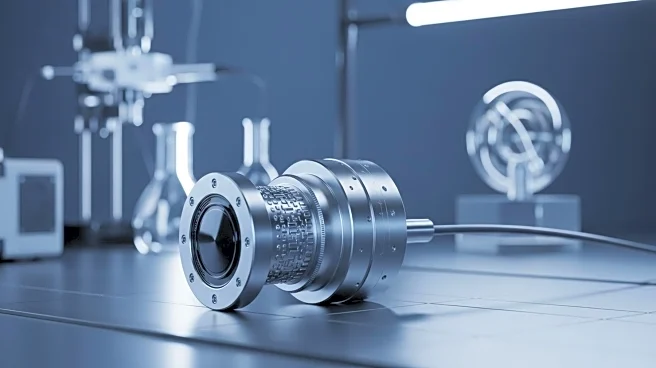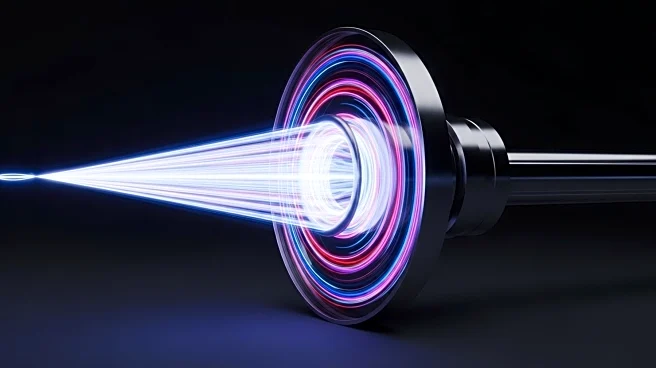What's Happening?
Researchers have developed a new type of magnetic sensor that utilizes exceptional point (EP) physics, a concept from non-Hermitian physics, to enhance sensitivity. This sensor, described in a recent publication, uses magneto-optical effects within an optical cavity to achieve tunable sensitivity. The sensor incorporates a liquid crystal absorber to introduce polarization-dependent losses, creating a non-Hermitian system. This setup allows for a significant increase in frequency splitting in response to changes in the magnetic field, particularly near the EP. The sensor's design promises improved error sensitivity compared to conventional sensors, with potential applications in various fields, including scientific research and everyday technology.
Why It's Important?
The development of this magnetic sensor is significant as it offers enhanced sensitivity, which is crucial for applications ranging from data storage in hard drives to navigation systems in vehicles. By leveraging EP physics, the sensor can achieve greater precision in detecting magnetic fields, which could lead to advancements in scientific research and technology. Industries that rely on magnetic sensors, such as automotive and electronics, stand to benefit from this innovation. The ability to tune the sensor's sensitivity also opens up possibilities for customized applications, potentially leading to more efficient and accurate devices.
What's Next?
The next steps involve further testing and calibration of the sensor to optimize its performance across different applications. Researchers may explore the use of quantum probes to enhance sensitivity even further. As the technology matures, it could be integrated into commercial products, offering improved functionality in devices that rely on magnetic sensing. Additionally, the principles of EP physics could be applied to other types of sensors, broadening the scope of this research and leading to new innovations in sensor technology.
Beyond the Headlines
The use of non-Hermitian physics in sensor design represents a shift in how sensitivity can be enhanced, moving away from traditional methods. This approach could lead to new insights into the fundamental properties of materials and their interactions with electromagnetic fields. The ethical implications of such advancements include considerations of privacy and security, as more sensitive sensors could potentially be used for surveillance or data collection without consent.











